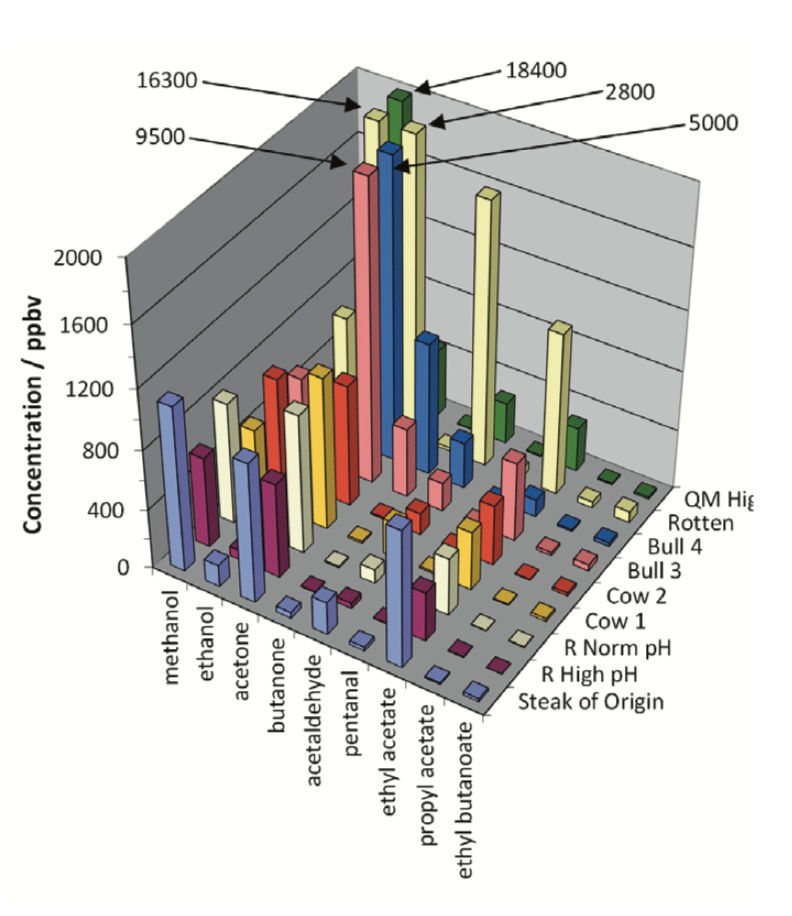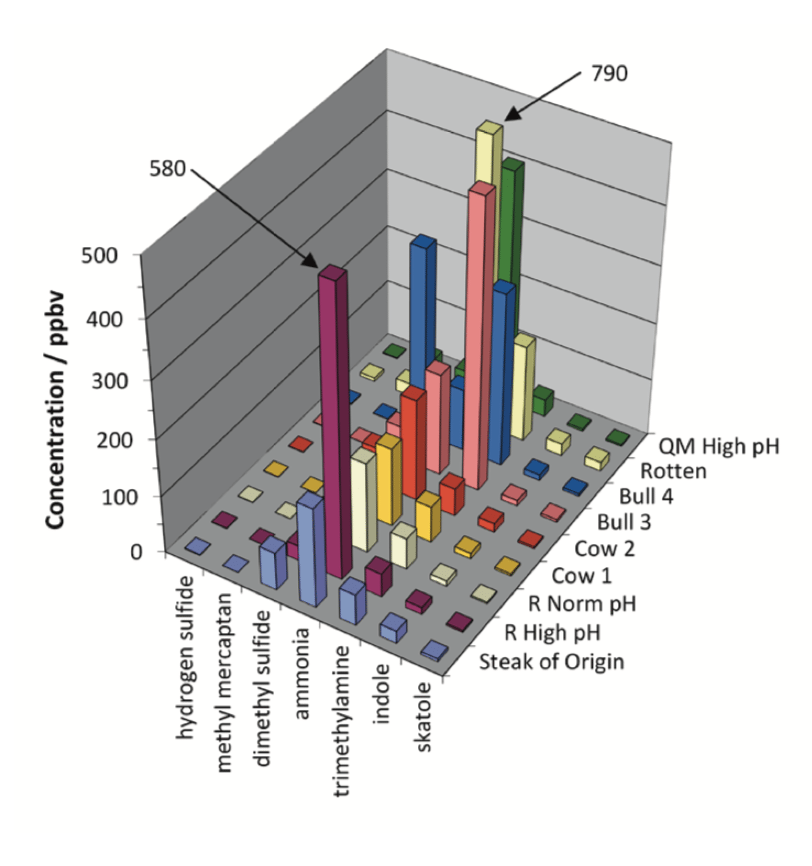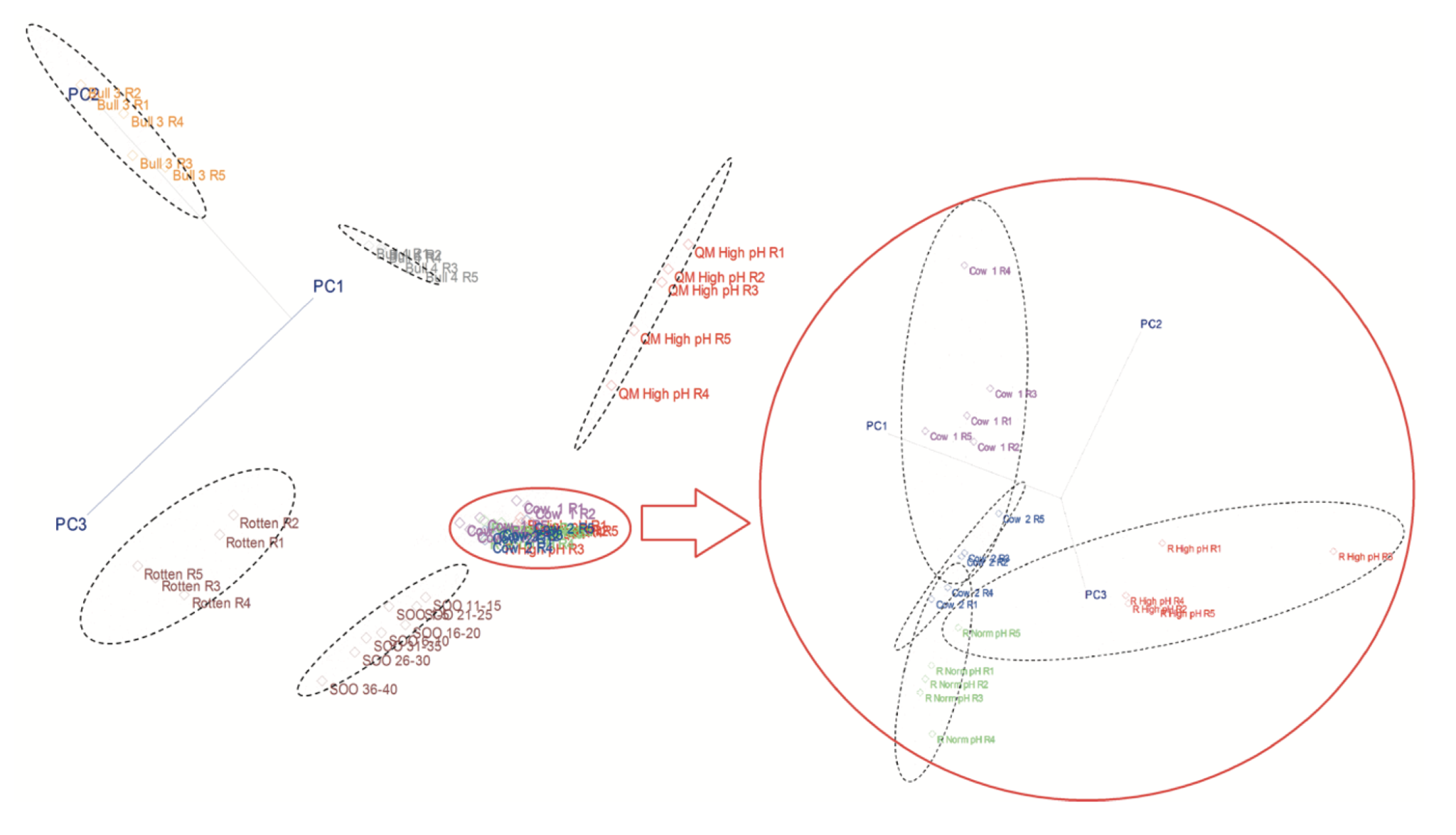Process-line or laboratory grading of fresh beef aroma is achieved simply and objectively by applying SIFT-MS for instantaneous, direct detection of evolved volatile compounds.
Beef aroma is an important characteristic in the acceptance of beef by consumers and aroma preference is often culturally dependent. Certain VOCs impart favorable or unfavorable characteristics to the aroma. However, grading has traditionally been achieved using sensory testing because robust, high-throughput analytical technologies were not available. SIFT-MS was applied to detection of VOCs from various New Zealand beef samples. SIFT-MS effectively identified premium quality carcasses early in the production process.
Figures 1 and 2 show the averaged concentration data for premium and defective-flavored beef samples. Premium beef samples were derived from eight prime beef cattle entered in the annual New Zealand “Steak of Origin” (SOO) competition. The defective beef samples were classified as “Bull 3”, “Bull 4”, “Cow 1”, “Cow 2”, “R High pH”, “R Norm pH”, “Rotten”, and “QM High pH” (these classifications are provided courtesy of an expert sensory panel, trained by Carne Technologies, New Zealand).

Figure 1. Headspace concentrations of alcohols, ketones, aldehydes, and esters for prime (Steak of Origin) and defective meat samples.

Figure 2. Headspace concentrations of sulfur- and nitrogen-containing compounds for prime (Steak of Origin) and defective meat samples.
Although the volatile profiles for the various classifications are visually different (Figures 1 and 2), for rapid screening applications (such as the testing laboratory or on the process line) classification using multivariate statistical methods is the preferred approach. The statistical model is created based on the instrumental measurements and sensory classifications, and then used to rapidly classify test samples. Figure 3 shows the model created from the beef data using the SIMCA algorithm (Infometrix® Pirouette software package). Each colored point represents a replicate measurement. All sensory classifications are very well differentiated via SIFT-MS analysis of the volatile compounds.

Figure 3. The results of SIMCA multivariate analysis of the headspace concentration data. Each colored point in the class projections graph represents a replicate measurement. The cluttered region of the class projection plot is expanded on the right.
This study demonstrates that SIFT-MS is ideally suited to rapid grading of beef aroma quality via emitted VOCs. SIFT-MS effectively discriminates premium quality beef from numerous defective flavors, providing an objective, rapid sensory test that enables many more samples to be screened per day than traditional sensory or instrumental approaches. The Syft Voice200ultra SIFT-MS instrument provides a robust, simple solution for both in-process analysis and off-line analysis (via autosampler integration).
